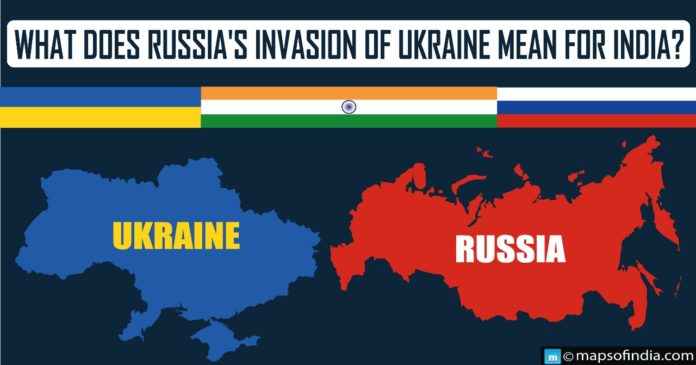The echo of air siren one after another screamed out in every major city in Ukraine could be witnessed across the globe. Aside from the humanitarian effects of the conflict, the whole world would face its financial consequences.
On February 24, 2022, the main stock indexes in India had their worst session in a year. They were down 4.8%. Oil prices have surpassed $100 per barrel for the first time after 2014, posing possibly India’s most serious macroeconomic problem. It happened after Russia invaded Ukraine and conducted missile attacks on its facilities.
India, the third among the countries’ largest importers of oil, depends on foreign nations for even more than 80% of its crude oil needs. Brent, the worldwide oil price benchmark, reached $105 per barrel following these events. It might increase India’s oil import cost, hurting its external situation.
Rising oil prices exacerbate India’s inflation, deepen the country’s budget deficit, and create pressure on the currency. As a result, the rupee fell 1.5% versus the dollar, reaching 75.65. In addition, a 10% spike in crude oil prices increases India’s budget deficit by $15 billion, or 0.4% of GDP, causing the native currency to depreciate.
It may also cause the RBI to rethink its accommodative approach. Moreover, with Indian industries already grappling with rising input costs, increasing the price of oil and higher gasoline expenses would worsen the problem.
Based on the class and product type, crude oil might make up a significant portion to 50% of an FMCG firm’s raw materials basket. For example, crude oil, as well as its byproducts, are used for the production of detergents, soaps, and cosmetics. Industry such as cement, paint, airlines, and tyres would also be affected. Russia and Ukraine are not India’s foremost commercial suppliers. However, some businesses and products may feel the tension.
In 2021, bilateral commerce between India and Ukraine was valued at $3.1 billion. Exports of goods and services to Ukraine totalled $510 million, with pharmaceutical items accounting for 32% of that total. In addition, Telecom devices, iron and steel, agrochemicals, coffee, and other products are also exported.
That same year, India imported $2.6 billion in products from Ukraine, $1.85 billion of which was vegetable oils, primarily sunflower oil. Ukraine contributes to 70% of India’s sunflower oil shipments.
Any interruption in distribution will boost the value of sunflower oil since India imports more than 60% of its edible oil requirements, and sunflower oil contributes to 14% of India’s edible oil shipments.
In the meantime, trade relations between India and Russia are expected to reach $11.9 billion in 2021. Exports reached $3.3 billion in commodities, with pharmaceutical items accounting for $542 million of the total.
Electronics, iron, steel, tea, and car parts are other vital exports. India imported $8.6 billion from Russia during the same year. Major commodities included Crude oil, petroleum products, coal, fertilizers, gold, exotic stones, and rare metals.
Russia is India’s largest weaponry provider, accounting for half of the overall purchases. The US and Europe also threatened to impose the most severe penalties on Russia.
The crisis has seriously influenced lakhs of Indian citizens about India’s economy and trade. Over 18,000 Indian students study medicine or engineering in Ukraine, accounting for approximately a quarter of all international students. Before Ukraine closed its airspace to civilians on Thursday, they returned a few hundred of them.
The administration faces a difficult path ahead, from evacuating Indian students to tackling inflation and other effects on the economy of the Russia-Ukraine situation.
India presently maintains a neutral stance in the Russia-Ukraine conflict and has urged both nations to exhibit patience. Nevertheless, this would severely impact the nation and its economy. It is due to India’s trading links with the two countries. The Indian economy will take another hit following the COVID-19 outbreak if the international scenario worsens.




